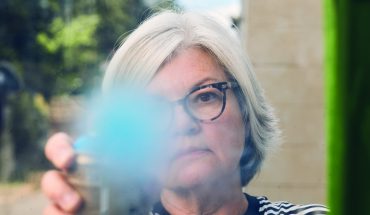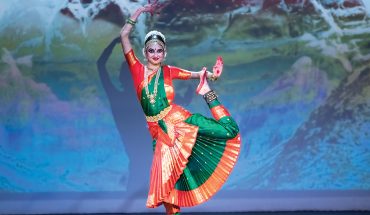by Marjorie Hodges
As the Raleigh arts community continues to thrive, many local artists, museum directors, curators, dealers, collectors and patrons are on the move, becoming part of the national and international arts scene.
Over the last few months, I have been fortunate to take part in two very different art-filled adventures with some of Raleigh’s most passionate arts supporters. The destinations – Havana, Cuba, and Miami Beach, Fla. – are only about 90 miles apart, but they are radically different cities with vibrant and distinct worlds of art and culture.
In late fall, about 30 of us – art lovers of all ages and interests – flew from Raleigh to Miami and then by charter plane to Havana. This trip, planned by the North Carolina Museum of Art and Academic Arrangements Abroad, was designed as an education into the art and culture of Cuba.
For Cubans who are living under the constraints of an oppressive government, the arts present a rare opportunity to express their views on society, which they do abundantly. The arts are everywhere! Talented musicians – from acoustic guitarists to salsa bands to the famous Buena Vista Social Club – play on every street corner and in most clubs and restaurants.
Visual artists using various media effectively express the feelings of isolation, despair, and guarded hope that are prevalent in Cuban society. Artists of all types are especially revered in Cuban culture.
Most of every day of our trip was spent visiting artists’ studios, enjoying live musical performances and dining at paladars, the restaurants in private homes that operate with the special permission of the Cuban government. Havana is a captivating city that seems frozen in the late 1950s. Its crumbling buildings, deteriorating infrastructure, crowded streets filled with music, and mid-century American cars provide an exceptional cityscape in which to experience art.
Our group, which included some of Raleigh’s most prominent arts advocates – Jim and Barbara Goodmon, Mason and Catherine Williams, Kay Schoellhorn, Bill and Ruth Barnett, Marion Church, Lou Johanson, Ben and Beth Yerxa, Betty Ann Evans, Betsy Carson, Dave and Cameron Halstead and Avery Knight – visited painters, photographers and sculptors in studios throughout the city and the countryside. Don Doskey and Joan Huntley of Chapel Hill enjoyed many of the artists’ studios.
We visited the Ludwig Foundation for the Arts, watched an informal rehearsal of the Contemporary Dance Company of Cuba at the Teatro Nacional, and toured the Ceramics Museum. Another major attraction was the Colon Cemetery, which is sometimes referred to as the largest sculpture park in Cuba. Its ornate tombstones commemorating Cuban heroes were a sight to remember.
David and Dawn Enochs of Manteo and Mike Molesky of Raleigh always had their cameras in hand and documented many of our encounters. Ann Sloan of Morehead City and Gene and Diane Linfors of Durham enjoyed the major sites along with Cyma Rubin, Charlie Brown and John Cassara of New York, Mary Marbut of Georgia and Susan Zivnuska of Virginia.
As we toured, we were keenly aware that for the Cuban people, there is little access to information – no newspapers or magazines, and mostly propaganda television programming. Rationing and limited ownership of goods and property have led to a society with little fresh food, lack of reliable transportation, and difficult living arrangements.
Osmany Betancourt Falcon is one artist working in these conditions. Despite dramatic economic disadvantages and limited access to materials, Falcon creates towering clay sculptures in a warehouse near the province of Matanzas, where we took a two-day tour.
This particular group of sculptures – La Comparsa – was created for the upcoming Havana Biennial and depicts a compara, or festive street procession that usually takes place during a carnival. Falcon’s figures are not joyous but depict complex struggles and oppressive government. The procession leader carries a burdensome backpack that represents the heavy load of Cuban citizens and leaders. There is also a “bureaucrat” with bold lines, and an authoritative bureau-like chest of drawers across his body. All of the figures seem contorted and uncomfortable, the message Falcon is trying to convey with his dramatic installation.
We also stopped in Ediciones Vigia, where artists created distinctive handmade books and cards as we watched. Most memorably, a choir of beautiful young men and women sang tunes like Shenandoah – a traditional American folk song – along with favorite Cuban melodies. The choir’s a capella performance was flawless and took place on a hilltop in an open-air church. The voices brought many of us to tears.
There’s no question that we returned to Raleigh filled with gratitude – for the opportunity to travel to Cuba, for the warm friendships that developed during the week, and for the inspiration that the Cuban people and their poignant art provided us. We also returned even more grateful to live in Raleigh, and more determined than ever to advocate for the arts in our city.
Art Basel Miami Beach: A world apart
One month later, I joined two dozen Raleigh artists, collectors, curators and museum directors for an annual pilgrimage to Art Basel Miami Beach, the most prestigious contemporary art fair in North America, and a spectacle to behold.
More than 250 galleries from North America, Europe, Asia and Africa showcased works by more than 2,000 artists. The fair has become an intense, international, art-filled week with educational lectures and festivities, plus a fleet of additional contemporary fairs occurring simultaneously.
 In contrast to crumbling, socialist Cuba, Miami Beach is the epitome of decadence and capitalism. Instead of deteriorating mid-century cars, Bentleys, Lamborghinis and Ferraris were abundant. Well-heeled international visitors and celebrities attended nonstop glamorous parties, concerts and art openings throughout the week – when they could hail a cab!
In contrast to crumbling, socialist Cuba, Miami Beach is the epitome of decadence and capitalism. Instead of deteriorating mid-century cars, Bentleys, Lamborghinis and Ferraris were abundant. Well-heeled international visitors and celebrities attended nonstop glamorous parties, concerts and art openings throughout the week – when they could hail a cab!
The Raleigh contingent was bigger than ever, and for good reason. Art fairs play an indispensable role in the art business now. Even though we certainly had a marvelous time, most of us attended the fair to see the art, meet artists, collectors and dealers, and to gauge the pulse and trends in the contemporary art world. N.C. Museum of Art director Larry Wheeler has been attending for years and spent the weekend with Lizzie and Charlie McNairy of Raleigh. One highlight of Larry’s week was dinner with leading artist Bill Viola – whose retrospective was shown at the Contemporary Art Museum of Miami – hosted by renowned New York gallery owners Jane and James Cohan.
NCMA curators Linda Dougherty and Jennifer Desai visited eight fairs, two private collections and two museum openings in three days. Contemporary Art Museum director Elysia Bowery-Reeder, who came to Raleigh via Chicago and Milwaukee, introduced us to many artists and dealers in her extensive network of art world friends. CAM board members Paul Coggins, Frank Thompson, Charman Driver, Sarah Yarborough and I spent a great deal of time walking the fairs meeting artists, dealers and collectors.
NCMA Foundation board member Glen Medders and Paul Coggins, who together have an admirable photography collection, hosted a splendid party at their Miami home, along with Larry Wheeler and Don Doskey of Chapel Hill.
We were all thrilled that the extraordinary artist Hank Willis Thomas attended the party. The gathering also provided an opportunity for us to discuss our favorites, including the De La Cruz collection, the Rubell Family Collection and artists Rashid Johnson, Eve Sussman, Mike Brodie, Whitfield Lovell, Fred Tomaselli, Andrea Bower, Gerhard Richter and Angel Otero.
Last, but certainly not least, the impressive list of North Carolina artists showing in the fairs this year included Scott Reeder, Taj Forer, Susan Harbage Page, Maya Freelon Asante and Andre Leon Gray. Raleigh artists Mathew Curran and Taylor White created a large-scale mural in Miami’s Wynwood Arts District, and many more North Carolina artists, including Jason Craighead, attended the fairs.
Whew! What an exhausting and fascinating weekend. So much to see, so much to learn and a growing number of Raleigh art enthusiasts participating in the excitement.



